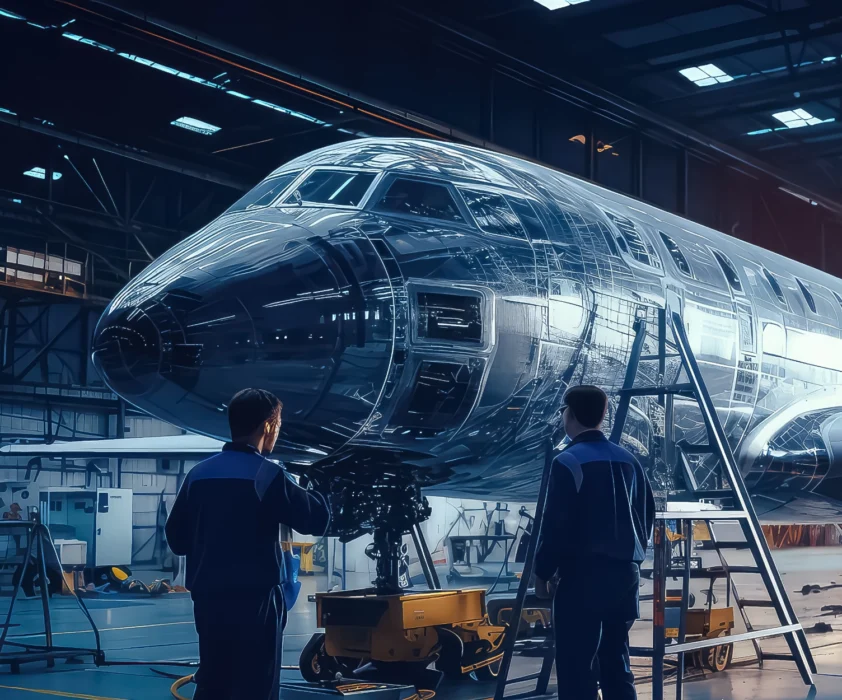
This article first appeared in the Colorado Real Estate Journal’s Office & Industrial Quarterly, March 2024 issue.
The picturesque landscapes of Colorado have long been synonymous with breathtaking mountains and outdoor adventures. However, beneath the stunning natural beauty lies a burgeoning industrial transformation that is reshaping the state’s economic landscape.
In recent years, Denver’s presence as a focal point for the aerospace and advanced manufacturing industries has grown exponentially, with companies seeking strategic spaces that foster sustained growth. Supply chain issues realized during the peak of COVID resulting in the progression of onshoring manufacturing companies, supplementing the billions of dollars in government grants to manufacturing, defense, and aerospace industries, have been significant catalysts in these sectors’ resurgence in Colorado. But this industrial renaissance isn’t confined to the traditional hubs of Boulder and Denver; instead, it’s permeating adjacent submarkets, marking a paradigm shift in the region’s industrial narrative.
As renowned entities like Lockheed Martin, Ball Aerospace, and Sierra Space extend their reach and attract other aerospace manufacturers and suppliers, the prominence of these tenant profiles has shifted the market. For example, Denver’s East I-70 submarket, which has historically commanded a high volume of transactions from big-box distributors, has softened, particularly for bulk warehouses in speculative projects. Meanwhile, shallow bay rear-load buildings with heavy power in the Northwest and North I-25 submarkets, which have historically recorded lower transaction volume, are undergoing a notable resurgence and have commanded significant interest from users, particularly in the aerospace and manufacturing sectors.
Rental Rates
Against the backdrop of this industrial pivot, the intricate tapestry of rental dynamics is revealing intriguing shifts across various submarkets.
The East I-70 corridor, which has traditionally attracted occupiers in need of expansive facilities, is experiencing a shift in preferences. There is a noticeable decrease in the demand for larger-sized spaces, indicating that large distributors and suppliers are taking a strategic pause to evaluate their options amidst the evolving economic conditions. The Southeast submarket highlights another concern: supply outpacing demand, causing rents to plateau. This introspective phase may be influenced by factors such as changing consumer behaviors, tenant profiles, market shifts, or a desire for more agile and adaptable spaces.
Contrastingly, infill Northwest, North I-25, and Central submarkets present a dynamic scenario characterized by sustained rental rate increases, fueled mainly by increased development costs, scarcity of land, and occupier’s location preferences. The Northwest and Central submarkets face a scarcity of suitable spaces for growth due to limited land for expansion, creating a competitive landscape reflected in a sustained uptick in rental prices. In the North I-25 region, the development of new assets delivered with expensive speculative office space and increased power has created a dynamic that requires developers to raise rents to maintain their projected yields. These submarkets, therefore, stand as a testament to challenges posed by limited resources and the ever-present pressure of construction costs in the face of growing demand by a new wave of occupiers.
In essence, the demand from aerospace and advanced manufacturing companies historically located along the I-36 corridor necessity for additional space, coupled with the scarcity of land to build additional product, has begun to push occupiers to the adjacent I-25 submarket and down into infill Central Submarket facilities. The relatively limited pocket of growth can, in part, be associated with the challenge of skilled labor retention and the desire to be near the large aerospace players in the market, therefore painting a picture of an industrial sector in flux, responding to various economic, logistical, and market forces
Meeting immediate and changing needs.
Traditionally, the process of securing industrial space in Colorado involves intricate permitting procedures and lengthy construction timelines that present formidable obstacles for companies with immediate space needs. Recognizing the urgency dictated by the dynamic and fast-paced nature of this emerging subset of tenants in the market, developers are proactively implementing strategic measures to address the pressing space requirements of tenants.
The approach to building speculative offices seamlessly integrated alongside industrial building deliveries serves a dual purpose, streamlining the leasing process while accommodating the compressed timelines of aerospace and manufacturing tenants seeking rapid occupancy due to the speed of growth. By incorporating speculative offices directly into industrial constructions, developers not only mitigate lead times but also foster a more agile and responsive leasing environment, ensuring an efficient experience for businesses in need of urgent solutions.
Furthermore, developers are actively working to deliver industrial buildings equipped with enhanced power capabilities that exceed the capacities of traditional spaces, primarily required by aerospace and manufacturing groups. This strategic foresight acknowledges the reality that the timeline for such upgrades post-occupancy could extend upwards of 18 months. By providing buildings with augmented power infrastructure, developers are offering tenants the flexibility and scalability required to meet evolving operational demands, ensuring that the industrial spaces remain adaptable to the dynamic needs of businesses over an extended duration.
Shaping a Dynamic Hub
The industrial landscape in Colorado is not merely a passive observer of change; it is actively shaping its identity as a dynamic and thriving aerospace and manufacturing hub. This transformation is evident through strategic initiatives such as constructing speculative offices and delivering heightened power; both underscore the market’s adaptability and responsiveness to the ever-evolving dynamics of industry growth.
As Colorado continues to shape its identity in the industrial realm, the significance of strategic planning and innovative solutions cannot be overstated. Developers’ creativity in solving shortages in water and power will influence their ability to succeed and cater to a resurging aerospace industry. In summary, Navigating the complexities of this evolving landscape requires a commitment to pushing boundaries, embracing change, and envisioning an industrial future beyond conventional expectations. The success of this evolution will hinge on the industry’s ability to not just respond but actively shape the trajectory of Colorado’s industrial narrative.
